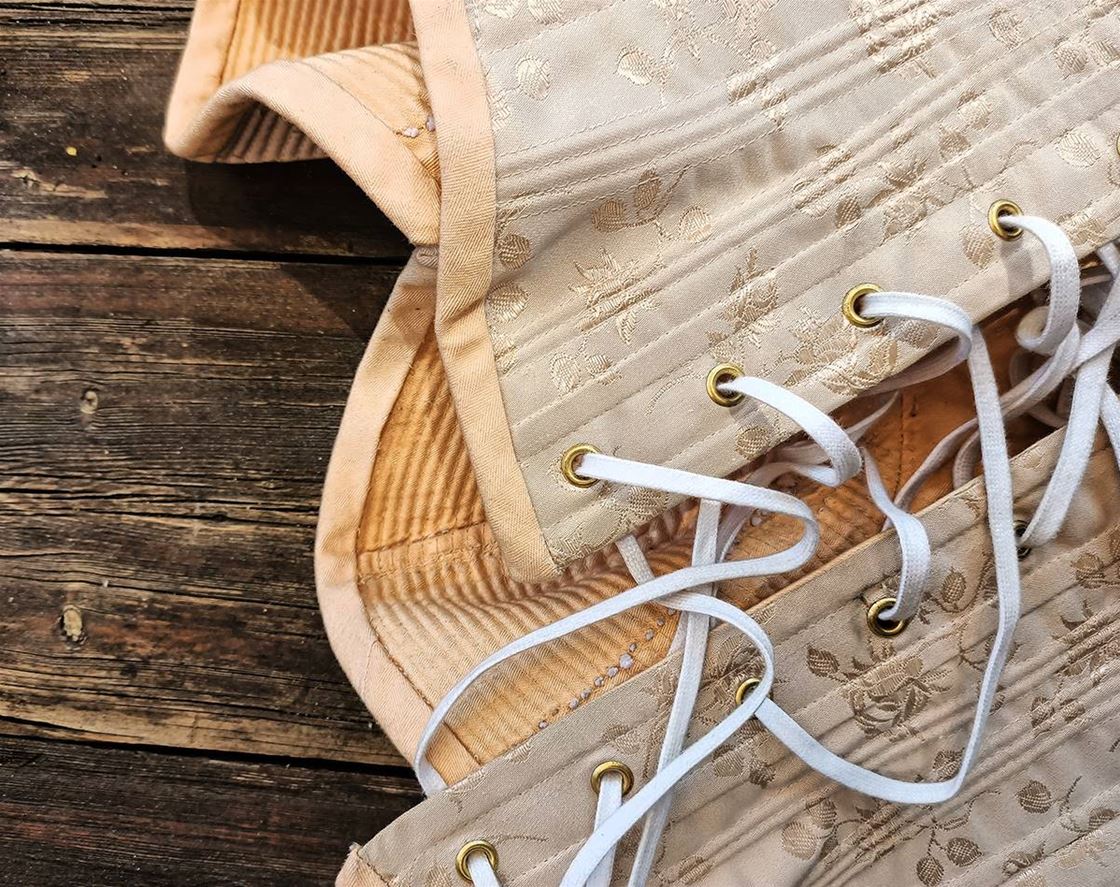my project: a costume design student’s 1885-inspired corset
A behind-the-scenes look at the making of a 19th century-inspired corset.
Though we often only see the end result of a big creative project, it follows heaps of study, experience, know-how and hard yakka. So we thought it was high time we had a sticky beak at a creative’s work in progress. We asked Rose Finlay, a super-talented stitcher and second-year costume student at the Western Australian Academy of Performing Arts (WAAPA), to tell us about her 1885-style corset and dress, which was inspired in part by the Mad Hatter.
Hi Rose! Tell us a little bit about yourself. I’m from the Adelaide Hills, but moved to Perth at the beginning of last year to study costume at WAAPA. On top of my WAAPA studies, I work as a dressmaker doing alterations. I love being at a sewing machine – either fixing, changing or making something. What inspired you to pursue costume as a career? My dad was in a small theatre company when I was growing up; that’s where my love for performing arts came from. I always loved the idea of being on stage, but I know I couldn’t be an actor, so my way to get on the stage now is through costuming and clothing.
What inspired you to pursue costume as a career? My dad was in a small theatre company when I was growing up; that’s where my love for performing arts came from. I always loved the idea of being on stage, but I know I couldn’t be an actor, so my way to get on the stage now is through costuming and clothing.
Working backstage for the first time for a WAAPA production of Strictly Ballroom really made me realise just how much I love the atmosphere of theatre. Seeing the costumes I was a part of making really made my heart sing, so I knew costume was the right thing for me.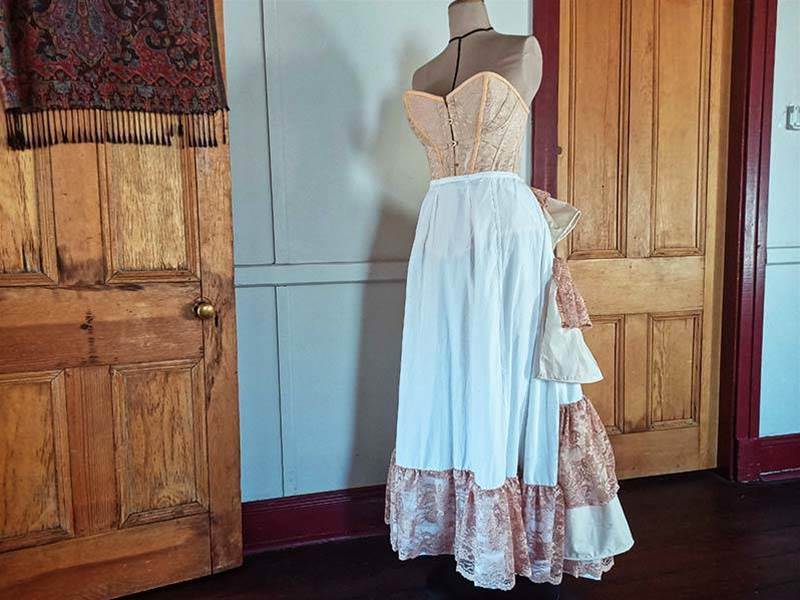 Why did you make this corset? Earlier this year, my classmates and I were asked to design and create a garment – and matching undergarments – for a chosen historical period. My corset is loosely based on a style from 1885. I also made a bustle and petticoat from the same period. By the end of this year, I’ll have made a full outfit, and that’s what I’m currently working on – the dress to go over all of my undergarments!
Why did you make this corset? Earlier this year, my classmates and I were asked to design and create a garment – and matching undergarments – for a chosen historical period. My corset is loosely based on a style from 1885. I also made a bustle and petticoat from the same period. By the end of this year, I’ll have made a full outfit, and that’s what I’m currently working on – the dress to go over all of my undergarments!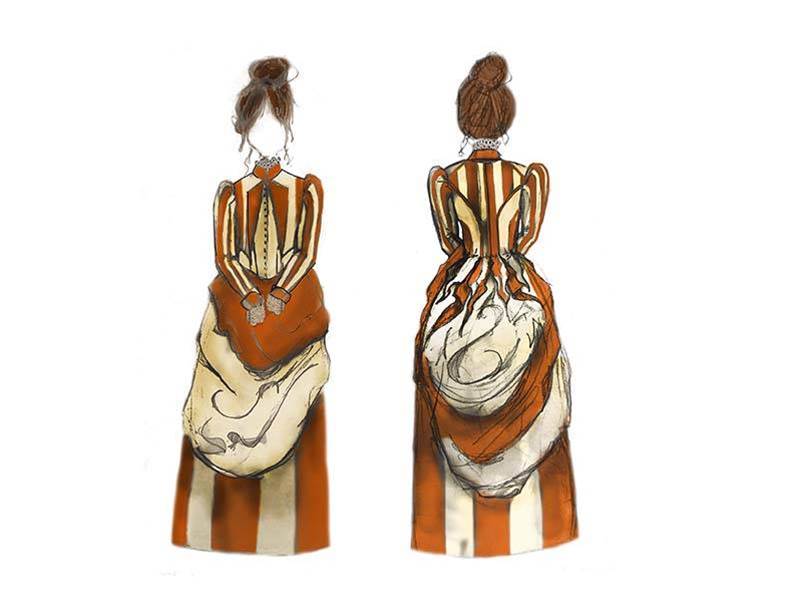 What inspired the design? For the whole project, we picked an era and a character to base our historical designs around. I had a little fun with it, not really keeping entirely traditional, and letting the whimsical nature of my chosen character take over, especially for my outer garment . The design of my corset and the garment worn over it is a combination of styles from 1885 to 1890, mixed with the aesthetic of the Mad Hatter from Tim Burton’s Alice in Wonderland.
What inspired the design? For the whole project, we picked an era and a character to base our historical designs around. I had a little fun with it, not really keeping entirely traditional, and letting the whimsical nature of my chosen character take over, especially for my outer garment . The design of my corset and the garment worn over it is a combination of styles from 1885 to 1890, mixed with the aesthetic of the Mad Hatter from Tim Burton’s Alice in Wonderland.
Why are you proud of this project? I love that it was a challenge and something completely new to me. The sense of achievement after completing it was huge. Many elements of making a corset are time-consuming and sometimes really quite rough on the hands due to the rough fabric and the process of threading cording through it. I had blisters and developed some mean callouses after that. It makes seeing the end result is that much more enjoyable.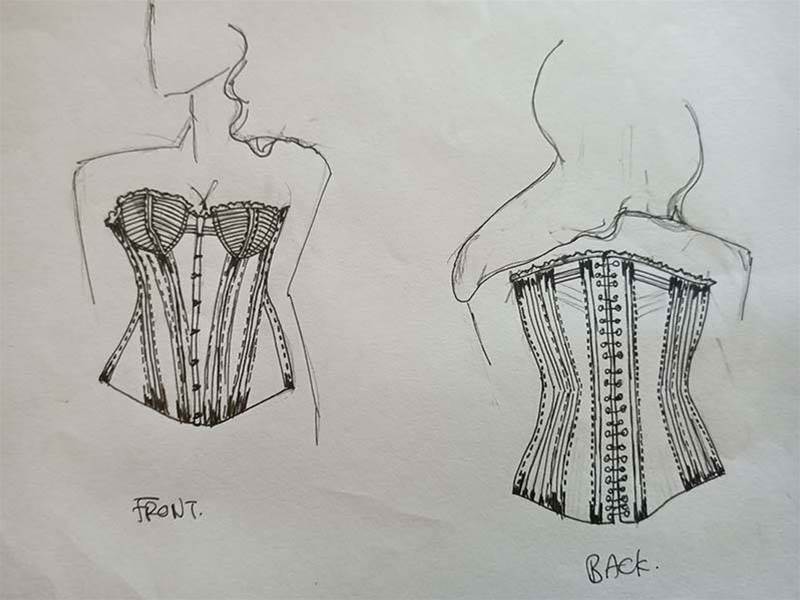 How did you put it together? I used a sewing pattern for a late 1880s/early ’90s-style corset from Corsets: Historical Patterns and Techniques by Jill Salen. I adapted it to fit my design and my body shape, which is pretty different to the average 1880s body. This was my first challenge!
How did you put it together? I used a sewing pattern for a late 1880s/early ’90s-style corset from Corsets: Historical Patterns and Techniques by Jill Salen. I adapted it to fit my design and my body shape, which is pretty different to the average 1880s body. This was my first challenge!
I dyed my [base] fabric a peach-orange colour to tie in some of the Mad Hatter design references, Other elements include piping cord, boning and eyelets down the centre back. Threading the piping cord through all the small channels over the bust, front, and back took hours – I felt like I was stuck on that step for a week. It’s a big process, but I’m so excited for when I have more free time to make another one. It’s kind of addictive.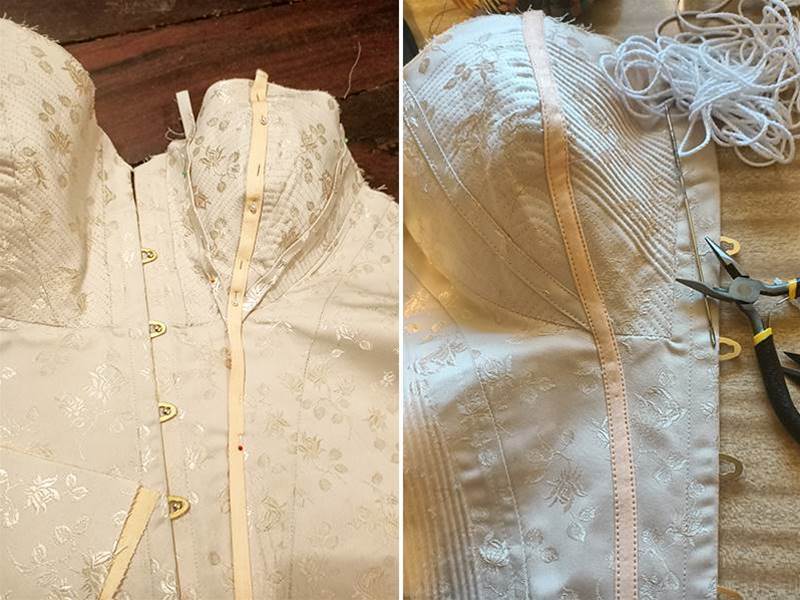 What kind of fabric did you use? I used two layers of coutil, a heavyweight fabric used for corsetry. One fabric is plain and one has a rosebud design. This was purchased online from a corsetry site called Sew Curvy, which has everything you need to get started on your corseting journey.
What kind of fabric did you use? I used two layers of coutil, a heavyweight fabric used for corsetry. One fabric is plain and one has a rosebud design. This was purchased online from a corsetry site called Sew Curvy, which has everything you need to get started on your corseting journey.
What's happening in the images below?  This is the very beginning stages of construction! The background is actually the outer fabric, ready to be cut. I think I was putting that part off for a bit – cutting into fabric is always a little nerve-wracking for me still.
This is the very beginning stages of construction! The background is actually the outer fabric, ready to be cut. I think I was putting that part off for a bit – cutting into fabric is always a little nerve-wracking for me still.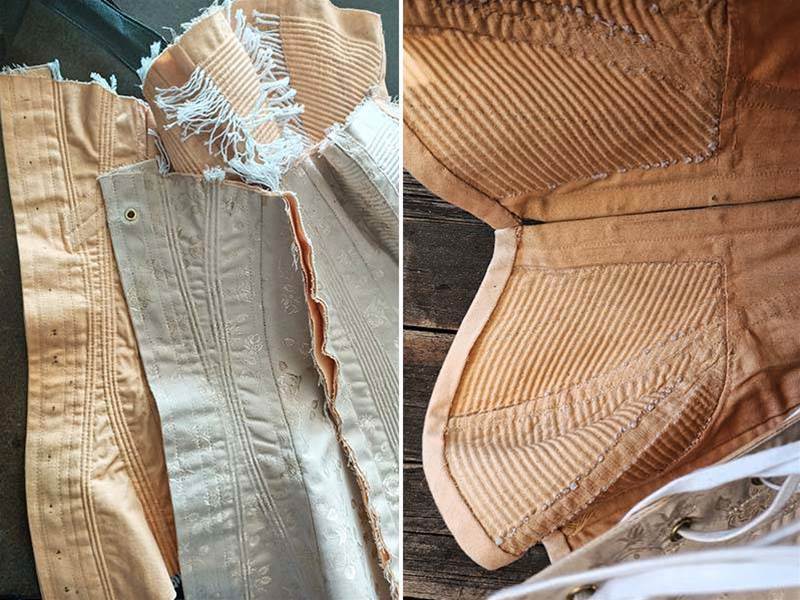 I used 3mm piping cord to insert into small channels that were sewn into my corset, and there’s a lot of it! The bust is fully corded, which took me days to do.
I used 3mm piping cord to insert into small channels that were sewn into my corset, and there’s a lot of it! The bust is fully corded, which took me days to do.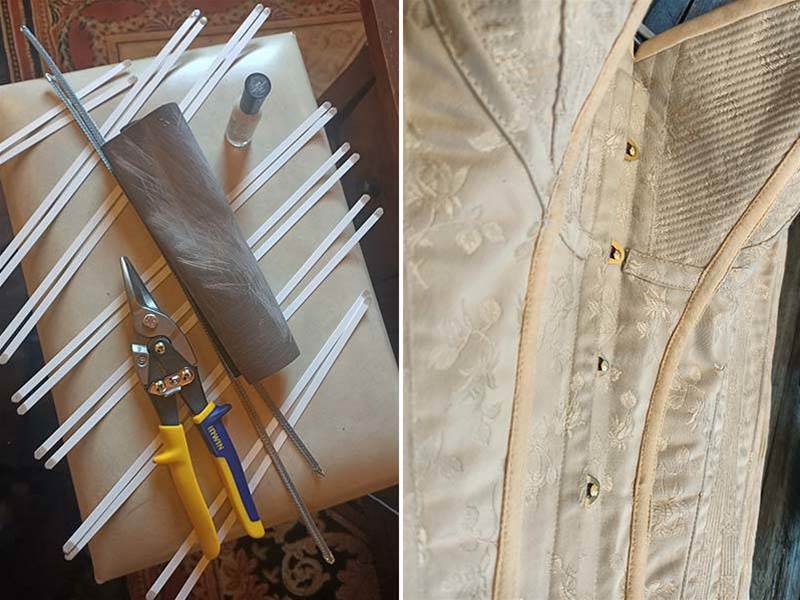 I used steel boning and spiral boning. Here you can see all the boning pieces that ended up being inserted into channels through my corset. These pieces had to be cut, filed and the ends finished (in this case with nail polish) to stop the boning edges wearing at the fabric too much.
I used steel boning and spiral boning. Here you can see all the boning pieces that ended up being inserted into channels through my corset. These pieces had to be cut, filed and the ends finished (in this case with nail polish) to stop the boning edges wearing at the fabric too much.

I’m currently working on making a full dress to go over the corset, bustle and petticoat I have already made. This is my progress with the back of that dress.
What does the corset feel like when you wear it? Actually not too bad! It took some getting used to. During the first fitting, I felt pretty light-headed and just uncomfortable, but after a couple of minutes I loved how secure and upright I felt. It’s definitely not an organs-being-squished situation. Having said that, it’s a pretty joyful feeling taking it off and letting your body fall back to its natural way. What have you learnt from the project so far? I had very limited knowledge and experience with anything historical or corsets in general before I started this, so I learnt a lot about different styles of corsets and undergarments around the Edwardian and Victorian eras, materials that would be used in historical pieces, and how to recreate looks with modern materials for theatre.
What have you learnt from the project so far? I had very limited knowledge and experience with anything historical or corsets in general before I started this, so I learnt a lot about different styles of corsets and undergarments around the Edwardian and Victorian eras, materials that would be used in historical pieces, and how to recreate looks with modern materials for theatre.
What I found quite interesting was just the shape of a bustle in particular and how they evolved and changed over time. I’m still in awe of how people got dressed and the different silhouettes they desired.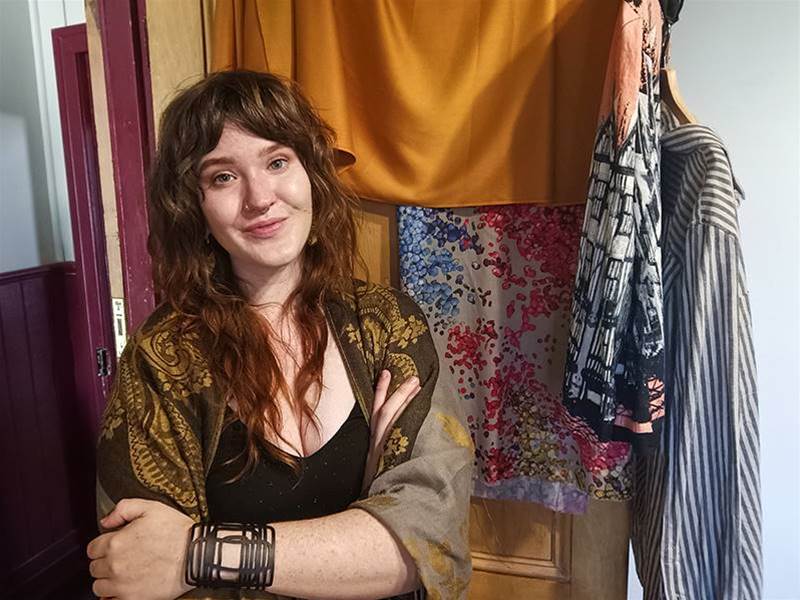 You're halfway through your WAAPA journey. What do you hope to do when you graduate? I would love to find work with a ballet company or a touring gig as a dresser. I love so many parts of the industry, so I’m really excited to get out there and take hold of any opportunities that I can see myself growing with.
You're halfway through your WAAPA journey. What do you hope to do when you graduate? I would love to find work with a ballet company or a touring gig as a dresser. I love so many parts of the industry, so I’m really excited to get out there and take hold of any opportunities that I can see myself growing with.
Do you have any tips for folks who want to study costume design? I highly recommend building a small portfolio that demonstrates your passion for the industry. I know it’s a little lame to say, but there is so much truth in the fact that you can learn skills, but passion is something only you can bring, so having that obvious in an application will only be a good thing. Studying is the perfect time to get really creative; it’s when you’re surrounded by people who help you learn. You can tone it down later if need be, but here’s hoping you never have to.
This interview was brought to you by our creative buds at the Western Australian Academy of Performing Arts (WAAPA).

